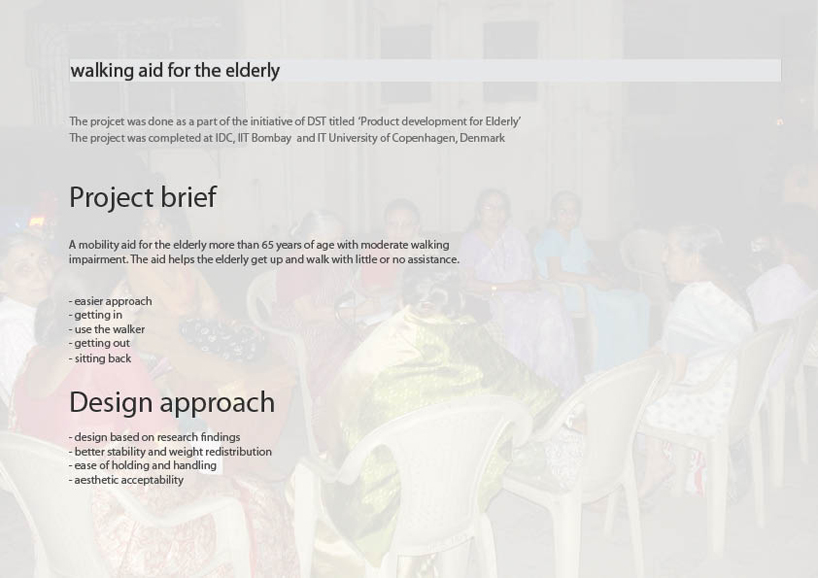
walking assist for the elderly for inclusion and motivation by pragati kapur from india
designer's own words:
Our bodies are designed by nature to stand upright and walk. The inability to do so, limits one or more major life activities
Walking is the most basic and the main form of transportation for human beings and is therefore essential for optimal health and function.
Mobility aids are meant for those having balance or weight bearing problems.There are a wide range of products aimed at improving the mobility of elderly but there are very few which concentrate on assisting people use their remaining ability.
The loss of independence and decline in the quality of life which are a part of growing old, is what the project intends to address, and make walking an enjoyable and desirable experience.
The project, funded by Department of Science and Technology of India, focuses on mobility which is the second largest cause of disability among elderly in India.
The project, titled ‘Augmented mobility for elderly’ is aims at better:
• Functionality
• Interaction abilities
• Aesthetics
The project required an understanding of the various stages of walking with an aid and deriving insights for coming up with design solutions. A part of the project also deals with building interaction abilities, ’self monitoring and social interaction’ into the aid, which was completed during a 2 month internship at IT University of Copenhagen, Denmark.
The project encouraged me to look for similarities which could act as openings for design interventions, applicable in the Danish and Indian contexts.
The final output is a full scale working prototype of the walking aid. The material for construction is lightweight aluminium which is easy for the elderly to manoeuvre. Metal bending and joinery was used for construction. Also the product USP s are easier getting up, provision of resting place with hand braking system, wheels for easier movement for people will lesser strength and height adjustability.
title & brief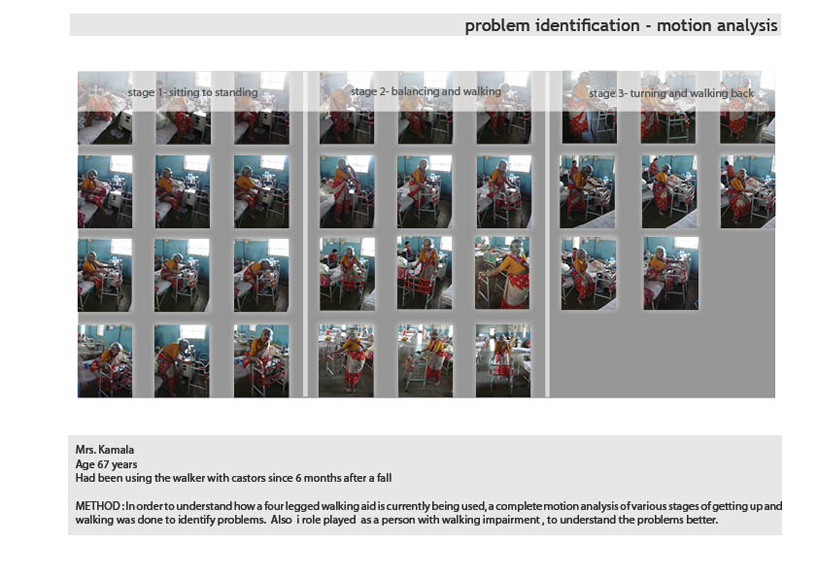 problem identification
problem identification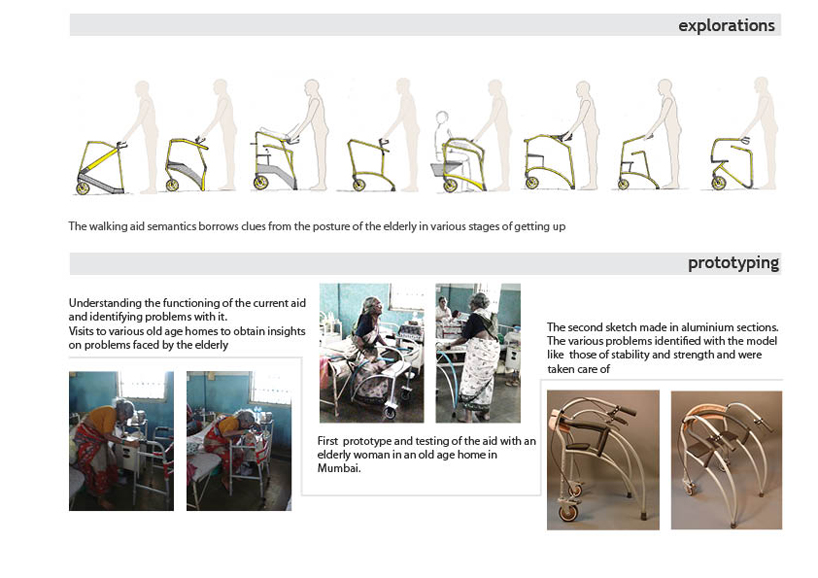 prototyping
prototyping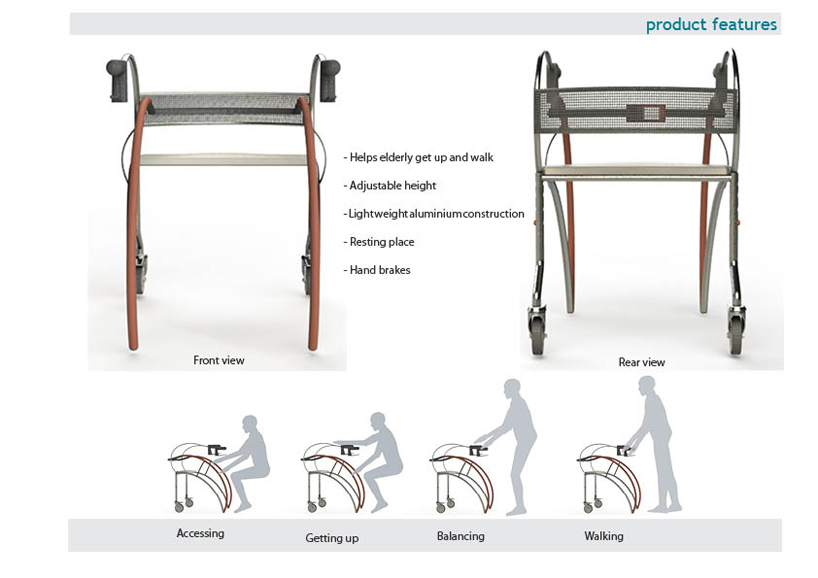 product features
product features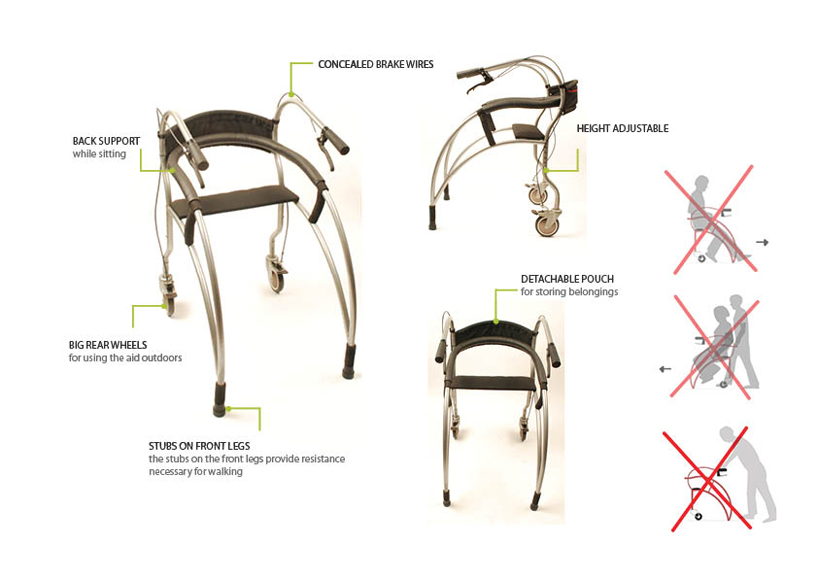 final model
final model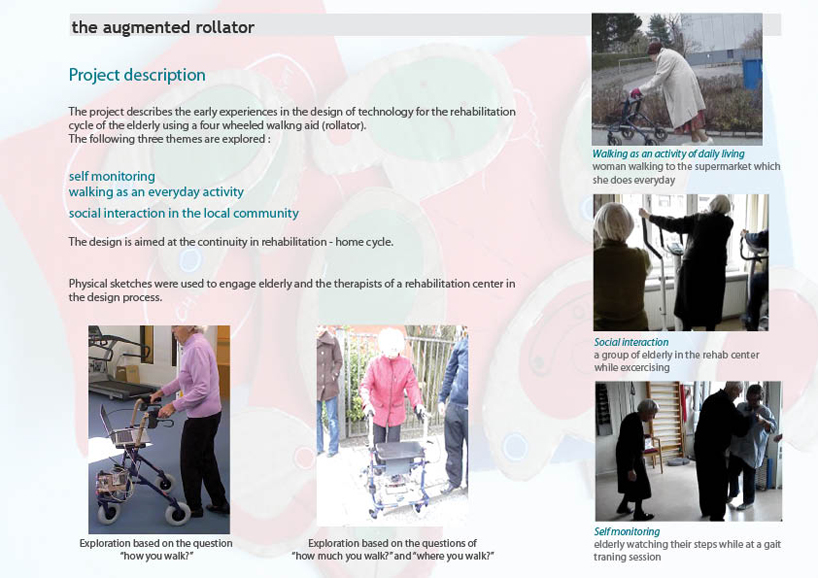 design for inclusion
design for inclusion